Composite Resin Filling
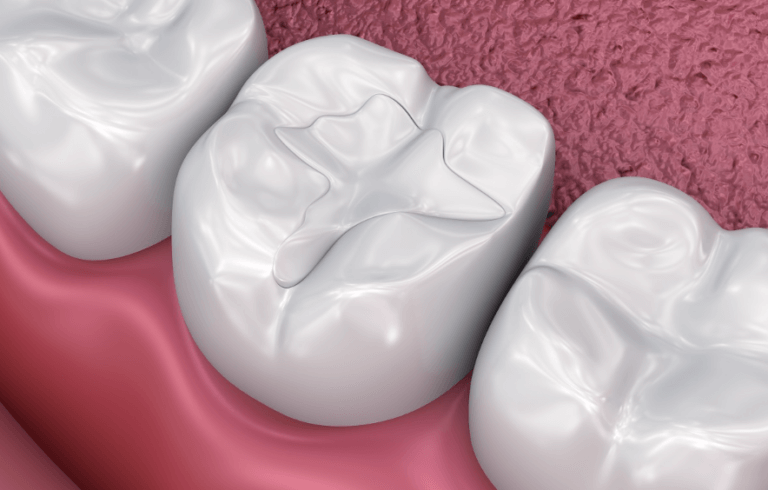
What Is A Composite Resin Filling?
A Composite Resin Filling, also known as a tooth-colored filling or white filling, is a modern dental restoration used to repair teeth damaged by tooth decay, fractures, or minor chips. Unlike traditional silver amalgam fillings, which are easily noticeable due to their metallic appearance, composite resin fillings are designed to blend seamlessly with the natural color of your teeth, making them virtually indistinguishable. This aesthetic advantage has made them a popular choice for patients seeking a more discreet and natural-looking option for restoring their teeth.
The composite resin material used in these fillings is a mixture of durable plastic (often acrylic or methacrylate compounds) and fine glass particles. This combination creates a strong, durable, and tooth-colored substance that effectively mimics the appearance and strength of your natural tooth enamel. Before deciding on whether a Composite Resin Filling are right for you, there are some things you should know:
- Who Needs A Composite Resin Filling?
- What Are The Advantages Of A Composite Resin Filling?
- What Are The Alternative Treatments If I Do Not Choose A Composite Resin Filling?
- How Much Does A Composite Resin Filling Cost?
- What Are The Steps In The Composite Resin Filling Procedure?
- Can I Have A Composite Resin Filling If I Am Pregnant?
- How Long Does A Composite Resin Filling Last?
- What Are Common Problems with A Composite Resin Filling?
If you have any further questions about A Composite Resin Filling or other dental services offered at Atlas Dental, please contact us.

Free phone consultation
Have questions about tooth fillings? Schedule a free phone consultation with our Toronto dentist.

5 star google reviews
Our patients love us! See for yourself why more and more people are choosing Atlas Dental for their dental fillings.

Book Emergency tooth filling
Do you think you have cavities and need an appointment? Book an emergency tooth filling online.
Who Needs A Composite Resin Filling?
Composite resin fillings are a versatile and widely used dental restoration option that can benefit a variety of patients with different dental concerns:
- Tooth Decay: Tooth decay, also known as dental caries or cavities, is a common dental problem caused by the buildup of plaque and bacteria on the tooth’s surface. If left untreated, cavities can progress and cause pain, sensitivity, and further damage to the tooth structure. Composite resin fillings are an excellent choice for treating tooth decay in both front and back teeth. The filling material bonds securely to the tooth, helping to restore its strength and functionality while seamlessly blending in with the surrounding enamel.
- Chipped or Fractured Teeth: Accidents or injuries can result in chipped or fractured teeth, affecting the aesthetics and function of your smile. Composite resin fillings are an ideal option for repairing minor to moderate chips and fractures, as they can be precisely shaped and colored to match the natural contour and shade of your teeth. This makes them particularly suitable for visible areas of the mouth, such as the front teeth.
- Worn Teeth: Over time, teeth can become worn down due to factors like teeth grinding (bruxism) or aggressive brushing habits. Worn teeth can lead to sensitivity and discomfort. Composite resin fillings can rebuild the worn surfaces of the teeth, restoring their original shape and function, and protect them from further damage.
- Replacing Old Fillings: If you have old, worn-out, or discolored fillings, you may consider replacing them with composite resin fillings. Not only will this improve the appearance of your teeth, but it can also enhance the overall strength and longevity of the restoration.
- Cosmetic Improvements: Beyond just addressing dental issues, composite resin fillings can be utilized for cosmetic improvements. Dentists can use the material for dental bonding procedures to correct minor imperfections, such as small gaps between teeth, irregular shapes, or uneven edges, giving you a more harmonious and aesthetically pleasing smile.
- Children and Adolescents: Composite resin fillings are often preferred for children and adolescents due to their non-invasive nature and aesthetic benefits. As younger patients are more conscious of their appearance, using tooth-colored fillings can help alleviate anxiety and promote better compliance with dental treatments.
It’s important to note that the suitability of composite resin fillings depends on the specific condition of your teeth and the recommendations of your dentist. If you’re experiencing any of the mentioned dental issues or are interested in enhancing the appearance of your smile, consult with a qualified dental professional to determine whether a composite resin filling is the right choice for your individual needs. If you have further questions about Composite Resin Fillings, please contact us.
What Are The Advantages Of A Composite Resin Filling?
Composite resin fillings offer numerous advantages that have made them a popular choice among dental patients and practitioners alike:
- Aesthetics: One of the most significant advantages of composite resin fillings is their ability to match the color of your natural teeth. Their tooth-colored appearance allows them to blend seamlessly with the surrounding enamel, making them virtually indistinguishable from your real teeth. This aesthetic benefit makes composite resin fillings an excellent choice for visible areas of the mouth, especially when compared to traditional silver amalgam fillings, which can be noticeable when you smile or speak.
- Conservation of Tooth Structure: Composite resin fillings bond directly to the tooth structure. This bonding process requires minimal removal of healthy tooth material, allowing dentists to preserve more of your natural tooth compared to amalgam fillings. The conservation of tooth structure ensures that your tooth remains stronger and less susceptible to fractures over time.
- Versatility: Composite resin fillings can be used to address a wide range of dental issues, from minor chips and fractures to moderate cavities. Their versatile nature allows dentists to precisely shape the filling material and adapt it to the specific needs of each patient, providing a customized restoration that fits naturally within the mouth.
- Bonding Strength: The bonding process of composite resin fillings ensures a strong and durable connection with the tooth structure. This bond helps to reinforce the tooth, reducing the risk of filling dislodgment and creating a more reliable and long-lasting restoration.
- Reduced Sensitivity: Compared to metal fillings, composite resin fillings can cause less post-treatment sensitivity. Metal fillings tend to conduct temperature changes, which can lead to discomfort in some cases. Composite resin fillings are not conductive, making them a more comfortable option for patients, especially those with sensitive teeth.
- Quick and Efficient Procedure: The process of placing a composite resin filling is generally faster than that of amalgam fillings. Since composite fillings can be placed layer by layer and cured instantly with a special light, the restoration can be completed in a single visit in many cases.
- Safety and Biocompatibility: Composite resin fillings are free from metals like mercury, making them an excellent choice for patients concerned about potential metal allergies or sensitivities. The absence of mercury also eliminates any associated environmental concerns.
- Easy Repair and Modification: Over time, dental restorations may require repair or modification. Composite resin fillings are more easily repaired or modified compared to other types of fillings, which can be a cost-effective and convenient option for patients in the long run.
It’s important to remember that while composite resin fillings offer various advantages, each dental restoration option has its unique considerations. Your dentist will carefully evaluate your dental health, discuss your preferences, and recommend the best treatment plan tailored to your specific needs and circumstances. If you have further questions about Composite Resin Fillings, please contact us.
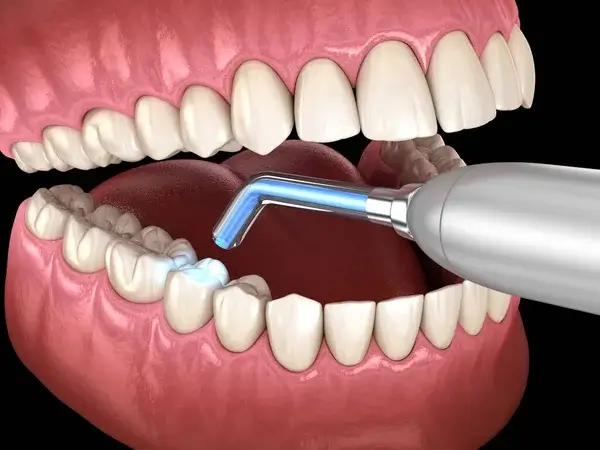
What Are The Alternative Treatments If I Do Not Choose A Composite Resin Filling?
While composite resin fillings offer several advantages, they are not the only option available for dental restorations. Depending on your specific dental needs and preferences, your dentist may recommend one of the following alternative tooth filling treatments:
- Glass Ionomer Filling: Glass ionomer fillings are a dental restoration option that releases fluoride over time, helping to prevent further decay. They are commonly used for small cavities, particularly in children’s teeth, as they are more suitable for primary teeth due to their ease of placement and fluoride-releasing properties. Glass ionomer fillings have a translucent appearance that can blend with natural tooth color to some extent, but they may not be as aesthetically pleasing as composite resin fillings.
- Amalgam Filling: Amalgam fillings, also known as silver fillings, have been used for decades and are known for their durability and strength. They consist of a mixture of metals, including mercury, silver, tin, and copper. Amalgam fillings are highly resistant to wear and tear, making them a suitable option for restoring back teeth that undergo significant chewing forces. However, their silver appearance makes them more noticeable in the mouth, which can be a concern for patients seeking a more discreet restoration.
- Porcelain Inlay: A porcelain inlay is a custom-made restoration designed to fit precisely into the cavity or damaged portion of a tooth. It is fabricated in a dental laboratory and then cemented onto the prepared tooth. Porcelain inlays offer excellent aesthetics and can closely match the color of your natural teeth. They provide a durable and long-lasting restoration that is well-suited for larger cavities or damaged areas.
- Porcelain Onlay: Similar to porcelain inlays, porcelain onlays are custom-made restorations that cover a larger portion of the tooth’s surface. Onlays are used when a tooth requires more extensive repair but does not require a full dental crown. Porcelain onlays are also fabricated in a dental laboratory and offer a strong, natural-looking restoration that preserves as much healthy tooth structure as possible.
- Dental Crowns: Dental crowns, also known as caps, are used when a tooth is severely damaged or has undergone root canal treatment. Unlike fillings, crowns cover the entire visible portion of the tooth above the gumline. Crowns can be made from various materials, including porcelain, ceramic, or metal alloys, depending on the specific requirements of the tooth and patient’s preferences. Crowns provide exceptional strength and protection for compromised teeth.
- Dental Veneers: Dental veneers are thin shells made of porcelain or composite resin that are bonded to the front surface of the teeth to improve their appearance. While veneers are primarily a cosmetic treatment for issues like teeth discoloration, gaps, and minor misalignment, they can also be used to restore the appearance of chipped or worn teeth in some cases.
It’s essential to consult with your dentist to determine the most suitable treatment option for your dental condition and individual preferences. Your dentist will consider factors such as the location and size of the restoration, your oral health, aesthetic goals, and budget to recommend the best alternative treatment for achieving a healthy and beautiful smile. If you have further questions about Composite Resin Fillings, please contact us.
Cost of Composite Resin Fillings
Whether it is an amalgam filling, composite resin filling, or glass ionomer filling, the cost of any of these Dental Fillings are similar and will depend on the location of the tooth (anterior, bicuspid or molar), as well as the size of the filling, which is translated as the number of “surfaces” involved. Imagine each tooth as a 5 surface box. Each “surface” that gets incorporated will dictate the size (and overall cost) of the tooth filling. Therefore, the cost of a filling can range between $200-460. The codes relevant to dental fillings in the Ontario Dental Association’s Suggested Fee Guide appear as follows:
Permanent Anteriors:
- 23111 – One surface: $200
- 23112 – Two surfaces: $250
- 23113 – Three surfaces: $300
- 23114 – Four surfaces: $370
- 23115 – Five surfaces (maximum surfaces per tooth): $390
Permanent Bicuspids:
- 23311 – One surface: $220
- 23312 – Two surfaces: $275
- 23313 – Three surfaces: $330
- 23314 – Four surfaces: $400
- 23315 – Five surfaces or maximum surfaces per tooth: $420
Permanent Molars:
- 23321 – One surface: $240
- 23322 – Two surfaces: $300
- 23323 – Three surfaces: $360
- 23324 – Four surfaces: $440
- 23325 – Five surfaces or maximum surfaces per tooth: $460
Dental Fillings are considered a basic service under all dental insurance plans and should be covered to your maximum insurable limit, but be sure to find out from your dental insurance plan provider how much you are eligible for before going ahead with dental treatment. Our fees are consistent with the ODA Fee Guide.
For patients without dental insurance, Atlas Dental is pleased to offer dental financing through Dentalcard. Affordable payment plans start at 7.95% for terms of 6 months to 6 years. To learn more about Dentalcard dental treatment financing, follow this link.
What Are The Steps In The Composite Resin Filling Procedure?
The process of getting a composite resin filling typically involves a series of well-defined steps. Here’s an overview of the typical steps involved in the composite resin filling procedure:
- Initial Examination and Assessment: During your dental visit, the dentist will conduct a thorough examination of your teeth, which may include dental X-rays to identify cavities or other dental issues. If a cavity or dental damage is detected and a composite resin filling is deemed suitable, your dentist will explain the procedure and answer any questions you may have. Please review these tooth filling pre-visit instructions before your appointment.
- Anesthesia Administration (Optional): Depending on the size and location of the cavity or the sensitivity of your tooth, your dentist may administer a local anesthetic to numb the area before starting the filling procedure. This step ensures that you experience minimal discomfort or pain during the treatment.
- Tooth Preparation: Once the tooth is numb (if anesthetic is used), the dentist will remove any decayed or damaged portions of the tooth using a dental drill or other specialized instruments. The dentist will shape the tooth’s cavity to create a clean and stable space for the filling material.
- Etching and Bonding: After tooth preparation, the dentist will apply a mild acidic solution (etching agent) to the tooth’s surface. This etching creates microscopic pores that enhance the bonding process between the composite resin and the tooth. The tooth is then coated with a bonding agent that further promotes the adhesion of the filling material.
- Composite Resin Placement: The dentist will carefully layer the composite resin material into the prepared cavity. Each layer is applied in small increments and hardened using a special curing light between applications. Once the composite resin is placed, the dentist will sculpt and shape the material to match the natural contours of your tooth.
- Smoothing and Polishing: After shaping the filling, the dentist will smooth the composite resin to eliminate any rough edges and create a seamless transition between the filling and the tooth’s surface. Once the desired shape and texture are achieved, the filling is polished to a natural luster, making it virtually indistinguishable from your surrounding teeth.
- Final Examination and Bite Adjustment: Before concluding the procedure, the dentist will conduct a final examination to ensure the filling’s proper fit, function, and aesthetics. Any necessary adjustments will be made to your bite to ensure that your teeth come together correctly when you chew and speak.
- Post-Procedure Care Instructions: Your dentist will provide you with specific dental filling post-procedure care instructions. These may include avoiding certain foods or drinks for a short period, maintaining good oral hygiene practices, and attending regular dental check-ups.
The entire composite resin filling procedure is usually completed in a single dental visit, making it a convenient and efficient option for restoring your teeth. With proper care and regular dental visits, composite resin fillings can provide durable and aesthetically pleasing restorations that contribute to your overall oral health and beautiful smile. If you have further questions about Composite Resin Fillings, please contact us.
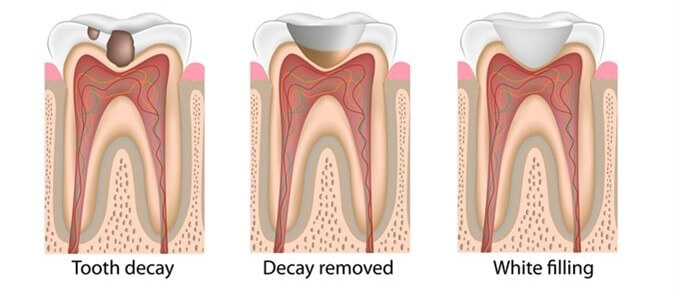
Can I Have A Composite Resin Filling If I Am Pregnant?
If you are pregnant and require a dental filling, composite resin fillings can be a safe and suitable option. However, there are some considerations to keep in mind:
- Consultation with Your Obstetrician: Before undergoing any dental procedure during pregnancy, it is essential to consult with your obstetrician or healthcare provider. Your obstetrician will assess your overall health and pregnancy status to determine if the procedure is appropriate for you at that particular stage of pregnancy.
- Dental X-Ray Exposure: Dental X-rays may be necessary to diagnose and plan the treatment, including the placement of a composite resin filling. In general, routine dental X-rays are safe during pregnancy when proper precautions are taken, such as using lead aprons to shield the abdomen and thyroid area. However, the decision to have X-rays during pregnancy should be made after careful consideration of the benefits and risks, and the procedure should only be performed if it is essential for your dental treatment.
- Local Anesthetic Use: If local anesthesia is required for the composite resin filling procedure, it is usually safe during pregnancy. The amount of anesthetic used in dental procedures is typically low and localized, minimizing any potential risk to the baby. However, your dentist will likely use the lowest effective dose of anesthesia, and the type of anesthetic used will be chosen with caution.
- Positioning During Treatment: Your dentist will take care to ensure your comfort and safety during the procedure. Proper positioning in the dental chair can help prevent discomfort and potential issues related to blood flow and breathing during the treatment.
- Medication Considerations: During pregnancy, some medications and dental materials may be best avoided or used with caution. However, composite resin fillings are generally considered safe as they are free from metals, including mercury, which can be a concern with certain dental materials.
- Timing of Treatment: If possible, dental treatments, including composite resin fillings, are often performed during the second trimester of pregnancy. This period is considered to be the safest time for non-emergency dental procedures, as the risk to both the mother and the baby is relatively low.
- Oral Hygiene and Preventive Care: Maintaining excellent oral hygiene practices, including regular brushing, flossing, and dental check-ups, is crucial during pregnancy. Preventive dental care can help reduce the likelihood of developing extensive dental issues that may require more extensive treatments.
It is essential to communicate openly with both your dentist and obstetrician to ensure the best possible outcome for both your dental health and the well-being of your baby. Your dental team will take all necessary precautions and tailor the treatment to suit your specific needs while keeping your pregnancy in mind. If you have further questions about Composite Resin Fillings, please contact us.
How Long Does A Composite Resin Filling Last?
On average, composite resin fillings can last between 5 to 10 years or even longer with proper care and maintenance. The longevity of a composite resin filling can vary based on several factors:
- Size of the Filling: Smaller composite resin fillings tend to last longer than larger ones. Large fillings may experience more stress from chewing forces, increasing the risk of wear and eventual failure over time.
- Oral Hygiene Practices: Maintaining excellent oral hygiene is crucial for the longevity of any dental restoration. Regular brushing, flossing, and using mouthwash help prevent the buildup of plaque and bacteria around the filling, reducing the risk of tooth decay and premature failure.
- Dietary Habits: Limiting the consumption of sugary and acidic foods and beverages can help preserve the integrity of the composite resin filling. Sugary and acidic substances can contribute to tooth decay and weaken the bonding between the filling and the tooth.
- Bruxism (Teeth Grinding): Habitual teeth grinding (bruxism) can place excessive stress on the filling, causing it to wear down or chip prematurely. If you have bruxism, your dentist may recommend wearing a custom mouthguard to protect your teeth and restorations.
- Biting Forces: Certain habits, such as nail-biting or using teeth as tools, can place undue stress on the composite resin filling, leading to its deterioration.
- Location of the Filling: Composite resin fillings in areas subjected to heavy chewing forces, such as molars, may not last as long as those in less stressful areas of the mouth.
- Quality of Dental Care: The skill and expertise of your dentist in placing the filling can significantly impact its longevity. A well-done composite resin filling with proper bonding techniques is more likely to withstand the rigors of daily use.
- Age of the Filling: Over time, all dental restorations will experience normal wear and tear. Periodic dental check-ups can help your dentist identify signs of wear and address them promptly to extend the life of your filling.
If you notice any signs of wear, sensitivity, or damage to your composite resin filling, it’s essential to schedule a dental appointment promptly. Your dentist can assess the condition of the filling and determine if any repairs or replacements are necessary. If you have further questions about Composite Resin Fillings, please contact us.
What Are Common Problems with A Composite Resin Filling?
While composite resin fillings are generally considered safe and effective, like any dental restoration, they can experience certain issues over time:
- Chipping or Fracture: Despite their durability, composite resin fillings can sometimes chip or fracture, especially if exposed to excessive biting forces or trauma. This may occur if you have bruxism (teeth grinding) or engage in habits like chewing on ice or hard objects. Small chips may not always be a cause for concern, but larger fractures may require repair or replacement of the filling.
- Wear and Tear: Over time, composite resin fillings may experience wear and tear due to regular use during chewing and biting. This wear can lead to surface roughness or loss of the filling material, potentially requiring repairs or replacement to maintain the integrity of the restoration.
- Staining and Discoloration: Composite resin fillings are stain-resistant to some extent, but they may gradually become discolored or stained by substances like coffee, tea, red wine, or tobacco use. Proper oral hygiene and avoiding heavily pigmented foods and drinks can help minimize staining.
- Recurrent Tooth Decay: While composite resin fillings are effective at sealing and restoring teeth, they are not immune to recurrent decay. If oral hygiene is inadequate or if there is any leakage or breakdown of the filling’s seal over time, new decay can develop around or beneath the filling, requiring replacement or repair.
- Tooth Sensitivity: Some patients may experience tooth sensitivity after getting a composite resin filling. This sensitivity is usually temporary and may occur if the tooth’s nerve was irritated during the preparation process. If the sensitivity persists or worsens, it’s essential to consult your dentist for evaluation.
- Marginal Discoloration: In some cases, the interface between the filling and the natural tooth structure may develop marginal discoloration, leading to a visible dark line around the edges of the filling. This issue is more common in older or larger fillings and may require replacement for cosmetic reasons.
- Premature Filling Loss: In rare cases, a composite resin filling may prematurely dislodge or fall out due to improper bonding or inadequate tooth preparation. If this happens, it is essential to seek prompt dental attention to prevent further damage.
Regular dental check-ups are essential for monitoring the condition of your composite resin fillings and identifying any potential problems early on. Your dentist can address any concerns, perform necessary repairs or replacements, and ensure that your fillings continue to function effectively and maintain your oral health. If you have further questions about Composite Resin Fillings, please contact us.
We also think you’ll like…
Icon Resin Infiltration
Icon Resin Infiltration What Is Icon Resin Infiltration? Icon resin infiltration is a minimally invasive dental procedure designed to treat white spot lesions on teeth.
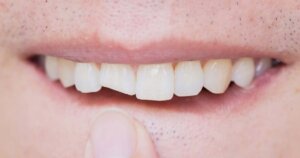
Missing or Loose Tooth Filling
How To Fix My Missing or Loose Tooth Filling What Causes A Tooth Filling To Fall Out? If a piece of your Tooth filling is
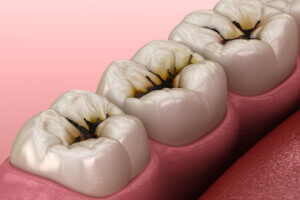
Reversible Pulpitis
Reversible Pulpitis What Is Reversible Pulpitis? If you’ve ever experienced a sharp, fleeting toothache when indulging in your favorite ice cream or a hot cup
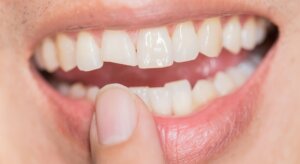
Cracked Tooth
Cracked Tooth What Is A Cracked Tooth? A Cracked Tooth is a common dental problem that can happen to anyone at any age. It occurs
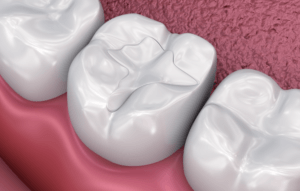
Glass Ionomer Filling
Glass Ionomer Filling What Is A Glass Ionomer Filling? A Glass Ionomer Filling is a dental restorative material that is used to repair cavities and

Chipped Tooth
Chipped Tooth What Is A Chipped Tooth? A chipped tooth is a common dental issue that occurs when a small portion of the tooth enamel

